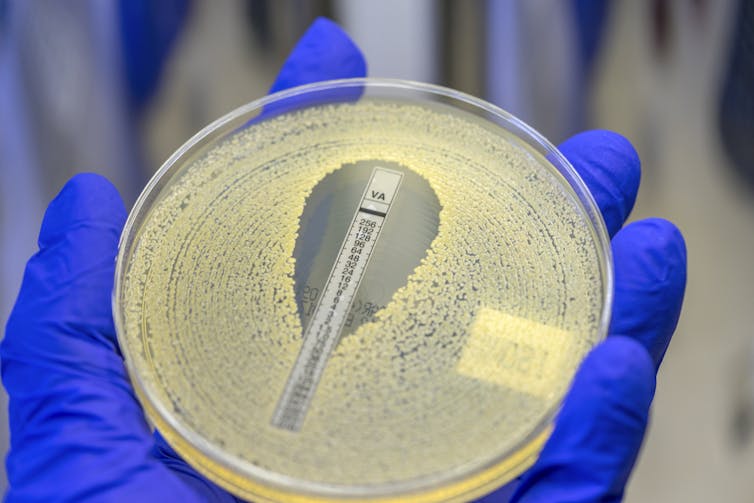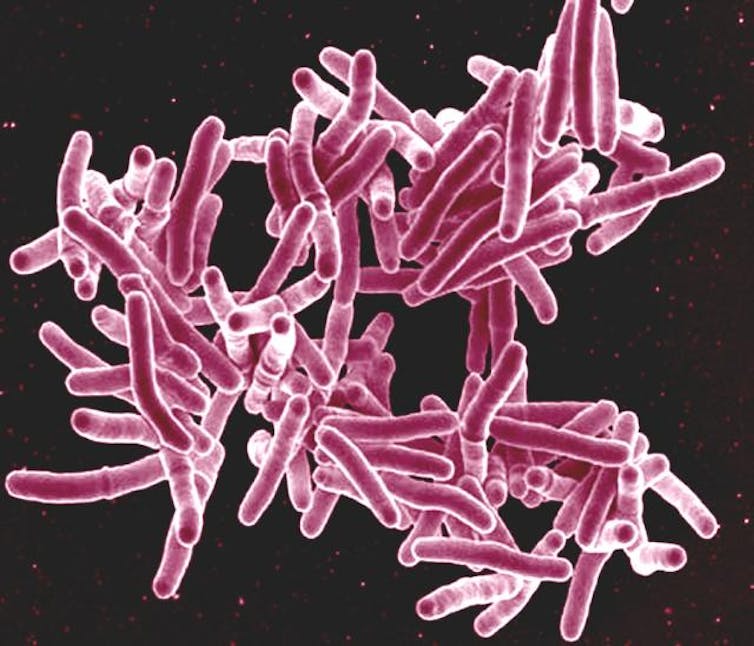The discovery of antibiotics in 1928 changed human history forever. Surgical procedures that once carried a high risk of infection have become safer and more routine. Antibiotics marked a triumphant moment for science, transforming medical practice and saving countless lives.
But antibiotics come with an inherent caveat: When overused, bacteria can become resistant to these drugs. The World Health Organization estimates that these superbugs caused 1.27 million deaths worldwide in 2019 and may pose an increasing threat to global public health in the coming years.
New discoveries are helping scientists address this challenge in innovative ways. Nearly a quarter of drugs not typically prescribed as antibiotics, such as those used to treat cancer, diabetes and depression, can kill bacteria at the doses typically prescribed to people, the study found.
Understanding the mechanisms by which certain drugs are toxic to bacteria could have profound implications for medicine. If non-antibiotic drugs target bacteria in a different way than standard antibiotics, they could serve as leads for the development of new antibiotics. But if nonantibiotics kill bacteria in a similar way to known antibiotics, then their long-term use (such as when treating chronic diseases) may inadvertently promote antibiotic resistance.
In our recently published study, my colleagues and I developed a new machine learning method that not only determines how non-antibiotics kill bacteria but also helps find new bacterial targets for antibiotics.
New way to kill bacteria
Many scientists and physicians around the world are tackling the problem of drug resistance, including mine and colleagues in the Mitchell lab at UMass Chan School of Medicine. We use the genetics of bacteria to study which mutations make bacteria more resistant or sensitive to drugs.
When my team and I learned about the broad antimicrobial activity of nonantibiotics, we were overwhelmed by the challenge it posed: figuring out how these drugs kill bacteria.
To answer this question, I used genetic screening techniques recently developed by colleagues to study how anticancer drugs target bacteria. This approach can identify which specific genes and cellular processes change when bacteria mutate. By monitoring how these changes affect bacterial survival, researchers can infer the mechanisms by which these drugs kill bacteria.
I collected and analyzed nearly 2 million instances of toxicity between 200 drugs and thousands of mutant bacteria. Using a machine learning algorithm I developed to infer similarities between different drugs, I grouped the drugs in a network based on their effects on the mutant bacteria.
My map clearly shows that the known antibiotics are grouped closely together according to their known killing mechanism categories. For example, all antibiotics that target the cell wall (the thick protective layer around bacterial cells) are grouped together and separated from antibiotics that interfere with bacterial DNA replication.
Interestingly, when I added non-antibiotic drugs to the analysis, they formed different centers than antibiotics. This suggests that non-antibiotic and antibiotic drugs kill bacterial cells differently. While these groupings don’t reveal how each drug specifically kills antibiotics, they suggest that those clustered together may work in similar ways.

Can we find new drug targets in bacteria to kill them? A final piece of the puzzle comes from the research of my colleague Carmen Lee. She cultured hundreds of generations of bacteria that were exposed to different non-antibiotic drugs commonly used to treat anxiety, parasitic infections and cancer. Sequencing the genomes of bacteria that have evolved and adapted to the presence of these drugs allowed us to identify the specific bacterial proteins that triclabendazole, a drug used to treat parasitic infections, kills bacteria. Importantly, current antibiotics generally do not target this protein.
In addition, we found that two other non-antibiotics using a similar mechanism to triclabendazole also target the same protein. This demonstrates that my drug similarity map is able to identify drugs with similar killing mechanisms, even if that mechanism is not yet known.
Help discover antibiotics
Our findings provide researchers with multiple opportunities to study how non-antibiotic drugs work differently from standard antibiotics. Our approach to mapping and testing drugs also has the potential to solve a key bottleneck in developing antibiotics.
The search for new antibiotics often requires significant resources to screen thousands of chemicals that kill bacteria and figure out how they work. Most of these chemicals act similarly to existing antibiotics and are thus discarded.
Our work shows that combining genetic screening with machine learning can help find chemical needles in the haystack that could kill bacteria in ways researchers have never used before. We haven’t developed many ways to kill bacteria, and there are still things we can do to combat the threats of bacterial infections and antibiotic resistance.
author
Mariana Noto Guillen,PhD. Systems Biology Candidate, UMass Chan School of Medicine

This article is reproduced from dialogue Licensed under Creative Commons.read Source article.
disclosure statement
Mariana Noto Guillen does not work for, consult, own shares in, or receive funding from any company or organization that would benefit from this article, and has disclosed no relevant relationships beyond her academic appointment.
partner
University of Massachusetts Contribute funds as a member of The Conversation US.
#Nonantibiotic #drugs #kill #bacteria #method #shows #kill
Image Source : www.gavi.org
